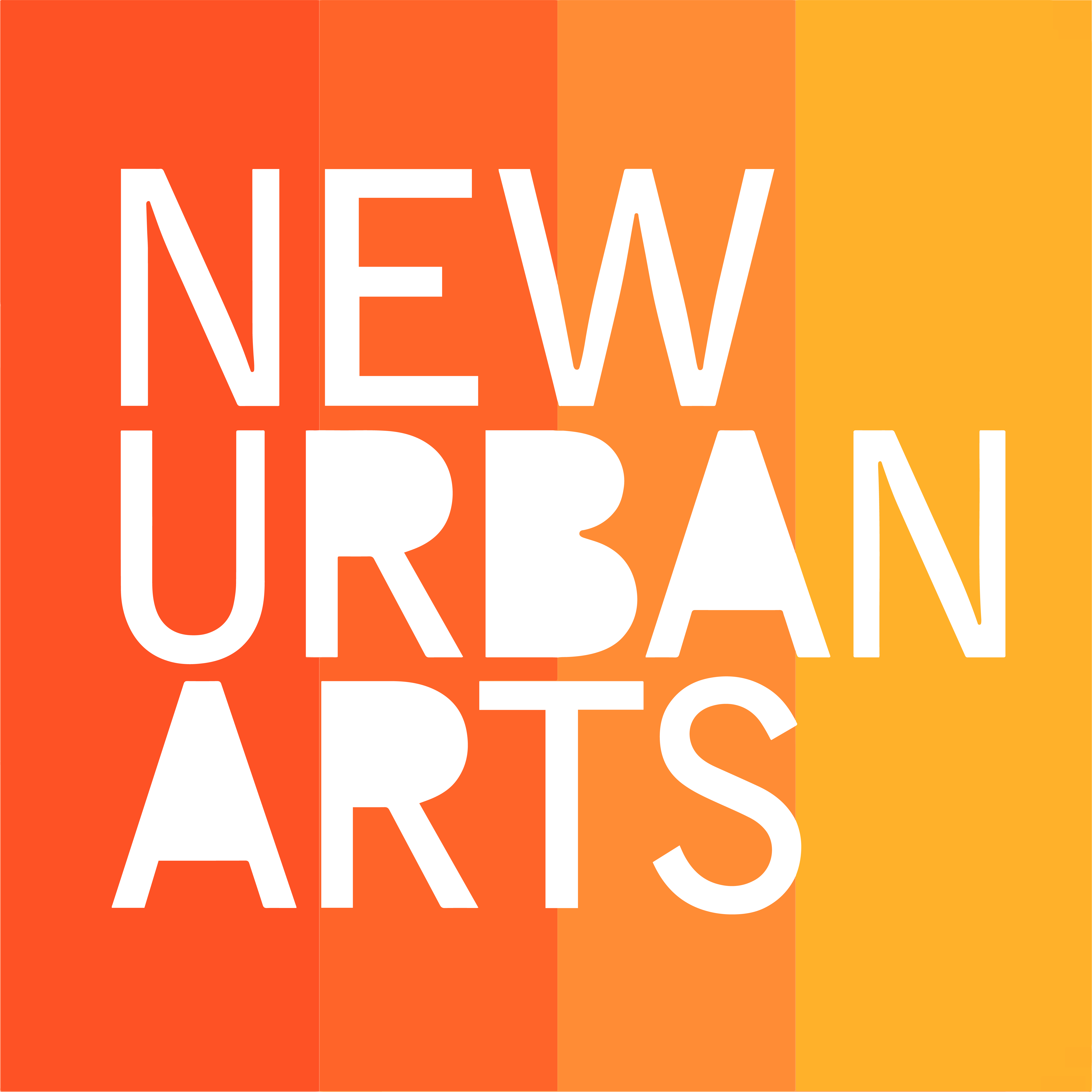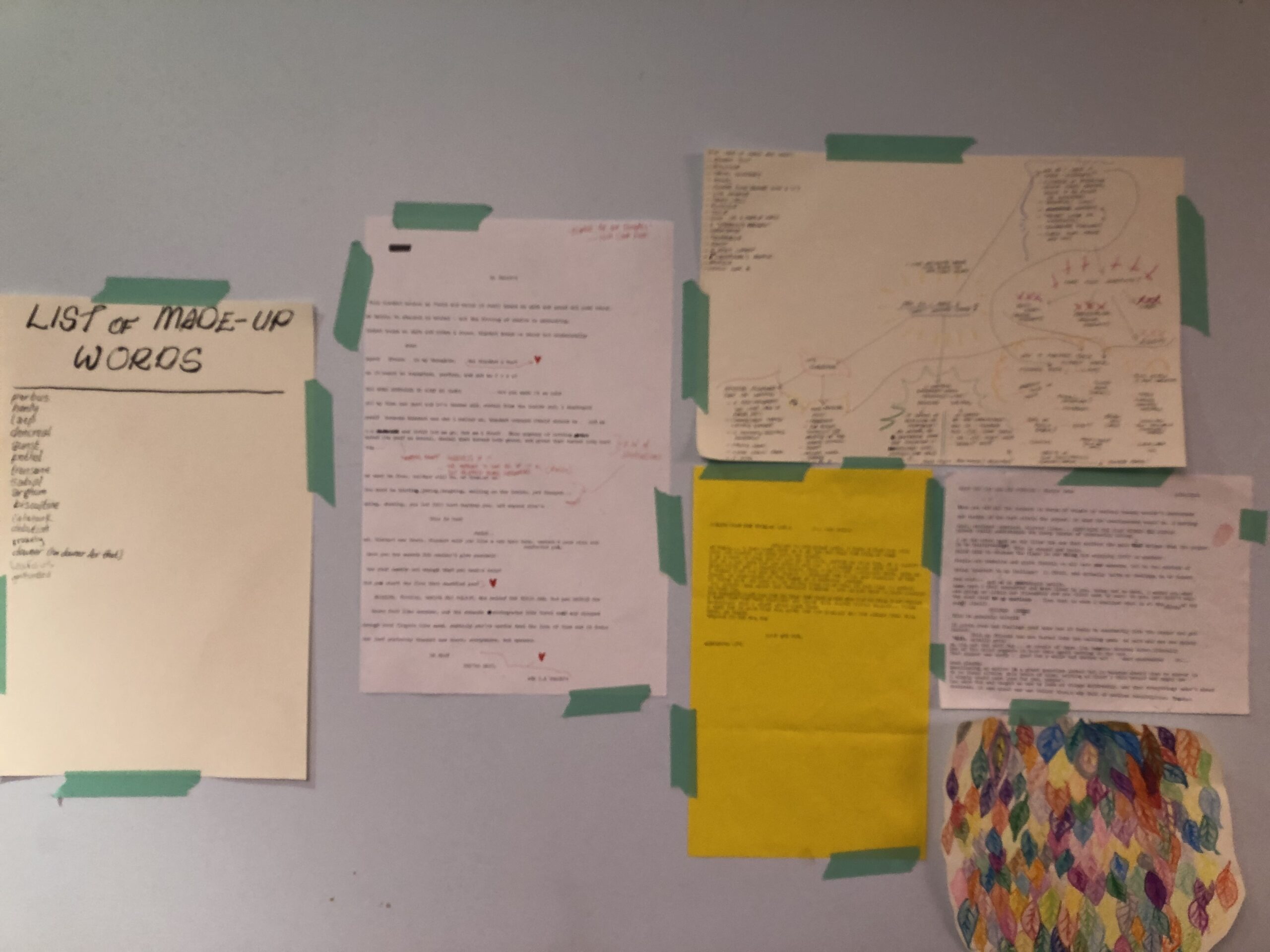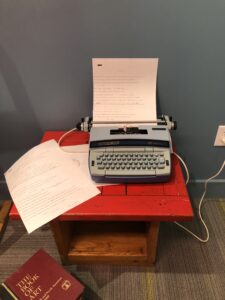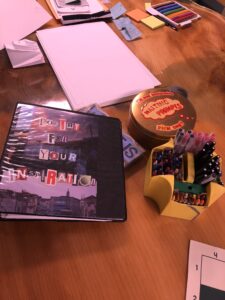As part of New Urban Art’s 25th Anniversary, we will be spotlighting current programs and initiatives across the organization. Kicking off our first month is a spotlight on our Literary Arts program with an interview with our Literary Arts Resident Artist Mentor.
Q: Who are you and what do you do at New Urban Arts?
My name is Dean Sudarsky, and I’m the Literary Arts Resident Artist Mentor (LARAM)—I work with students who want to practice creative writing and help with writing-related school work and college essays.
Q: Why are the Literary Arts important to students and the New Urban Arts Studio?
The Literary Arts enjoy a kind of strange reputation when it comes to access. On one hand, it can be the artform in the studio that is the most personal and the closest to the heart—many of our students write for themselves in their notebooks or keep dedicated journals, whether they think of that as creative writing or not. On the other hand, the way poetry and creative writing is taught in school can make it seem difficult, strict, or out of date. The typewriter we have in the studio is an amazing transformative tool that I think represents the experience our students sometimes have with writing. Students are curious about it as an unfamiliar machine and want to play with it. They’re not sure what to write so they just start pressing keys and when they see their own words become a live artifact, something clicks and the first piece of realizing “anybody can do this” comes into place. A lot of my job is to demystify poetry or writing and help students see that they have been talking for most of their lives and already know how to express themselves with words. Once students understand they can express themselves with words, writing becomes their most versatile and private art—they write in the margins of their notebooks, on their phones—and even as a way of thinking and brainstorming for other mediums.
Q: What’s going on in the studio for you right now?
Right before winter break I was working with a couple students on their applications to RISD precollege summer programs, helping a few other students with college admissions and financial aid essays, and working closely with a handful of students on their personal poems and short stories. A couple of them like to hash out their ideas on the studio typewriter and then we photocopy them and go over them together and mark them up. Another student just submitted a short story to the Scholastic Art & Writing Awards.
Since coming back from Winter Break, we’ve been hosting virtual open studio while the Omicron variant is spiking in Rhode Island, and even though virtual studio has its drawbacks compared to being in the NUA space, writing is one artform that translates very well to online programs—there’s a particular activity where we look at a collection of photos from a recent high-fashion runway shoot, everyone picks a particular photo or outfit, we spend a few minutes trying to write a description of the person without making reference to plainly identifiable aspects of the clothing (e.g. “You are a butterfly,” rather than, “You have a colorful dress that features two large wings”), and then read them aloud and guess which picture matches which description. It’s really fun and one of a few activities that work much better in virtual programs than in the studio.
Q: What are your hopes for Literary Arts going forward?
Although the LARAM position is relatively new to New Urban Arts, one of my favorite longstanding parts of NUA culture is that every piece of student work presented in a show has to be accompanied by an artist statement in the student’s own words. Artist statements are an opportunity for students to think critically about their work, to reflect on what they expressed and what the piece means to them. It also helps introduce them to the practice of writing about their own work, which artists of all ages and skills find to be a challenging part of the process. We provide them with a questionnaire to inspire them, but ultimately what they have to say about their art is up to them. I am always amazed by what they come up with. Since the start of the pandemic, we have not been able to host public exhibitions. My hope is that by the end of this year, we are able to showcase student work, bring back artist statements and see what this year’s students have to say.
Q: What are your dreams for the Literary Arts at New Urban Arts in the next 25 years?
Poetry and creative writing seems like something that comes in waves in terms of student interest at NUA. Looking through our collection of books and zines, I have found some really amazing anthologies of student poetry from NUA as well as thematic or directed collections. My hope is that with a dedicated Literary Arts RAM, we can build and sustain a writing community in the studio. Over the next 25 years I hope to see more of those collections on our shelves.



